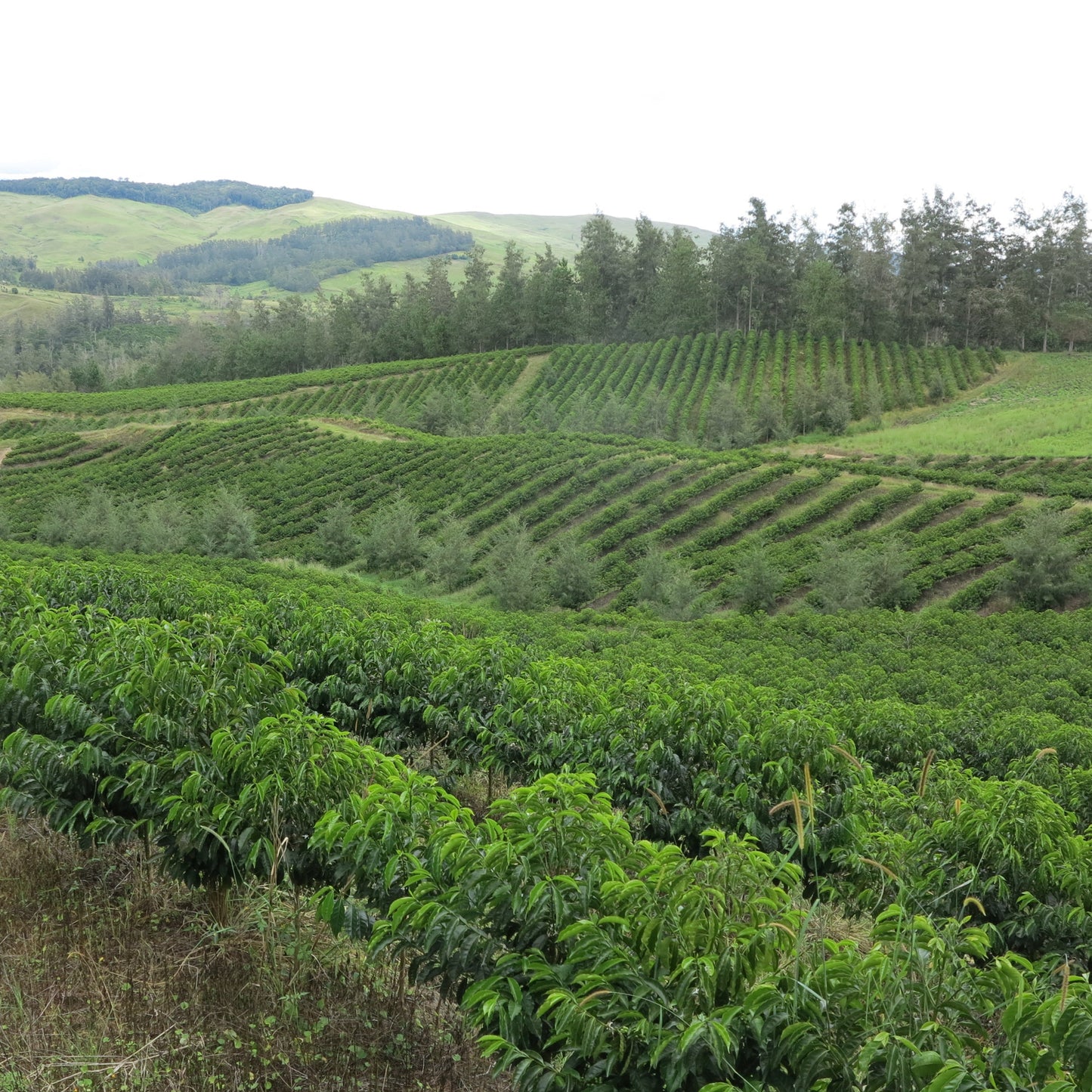
This coffee’s roasted in our espresso style — but that doesn’t mean you need to brew it as espresso. You can make it however you like — espresso, filter, moka pot, AeroPress or whatever you enjoy. We roast it a touch darker than we would a filter roast to caramelise the sugars and bring out smooth chocolatey and nutty flavours that cut beautifully through milk.
When you add milk the natural sweetness, fat and proteins tend to soften acidity and highlight caramelised flavours. That’s why lighter filter roasts can sometimes taste a bit sharp or sour with milk — they’re simply not built for it. Espresso roasts being more developed balance this out. The deeper caramelisation creates toffee and cocoa notes that blend harmoniously with milk’s creaminess while a hint of gentle bitterness adds that satisfying ‘coffee punch’ in your flat white or cappuccino.
If you prefer your coffee black this roast will still give you a full-bodied rich cup with plenty of depth and sweetness. For a lighter fruitier experience you might enjoy exploring our filter range instead.
Origin and Sourcing
?
?
?
Other soils provide unique advantages, often blended for optimal results. Clay retains moisture well, supporting hydration in dry areas and earthy flavors when drained to avoid root issues. Loamy soils balance sand, silt, and clay for excellent fertility and drainage, fostering healthy roots and smooth, sweet cups—commonly paired with volcanic ash, as in "Soil Characteristics: Volcanic Ash, Clay Loam." Sandy soils drain quickly but need extra nutrients to prevent drought, producing lighter, crisp coffees.
Laterite, iron-rich tropical soils, require management for their nutrient gaps but yield bold, spicy profiles. By selecting or combining these—from mineral-packed volcanic types to versatile loamy blends—growers minimize erosion, boost plant vigor, and craft distinctive terroir-driven flavors.
?
Roast Details
?
?
?
?
?
?
?
Taste Profile
?
?
Papua New Guinea | Kay Farm | Typica/Arusha/Bourbon Washed - When is peak freshness?
Medium Roast - Roasted on Roest P3000
About the producer
Anis Kay, Jiwaka PNG
Anis Kay has worked in the coffee industry since the mid 1980’s. He first began working on plantations as a young man straight out of school. He then worked with a single coffee exporter in factories and in office operations until starting up his own mill in the early 2000’s.
Anis’s farm is in the mountainous Jiwaka region, an area with good volcanic soils, good rainfall and an average temperature of 16º to 24ºC. Most of the coffee grown by Anis is under shade, the slow ripening and maturing adding to the amazing flavour of his coffee. Anis is extremely methodical in his process and has been producing a good consistent quality over these past few years. His coffee is processed at the Minji Wet Mill and then graded and packed for export by our Volcafe sister company in Goroka.
-
About Typica, Arusha, Bourbon
Mundo Novo is one of Brazil’s most well-known coffee cultivars. It’s a natural hybrid between Bourbon and Typica, discovered in the 1940s in the municipality of Mundo Novo, São Paulo. The variety is prized for its high yield and robust growth, especially in higher altitudes around 1,000–1,200 meters. Mundo Novo plants grow tall and require more space and pruning but are relatively disease-resistant. In the cup, Mundo Novo often presents a classic Brazilian profile—chocolatey, nutty, with low acidity and a full body—making it a favorite for espresso and blends.
Topázio is a cross between Mundo Novo and Yellow Catuai, developed by the Agronomic Institute of Campinas (IAC). It’s known for combining the productivity and vigor of its parent varieties while offering a more compact plant structure than Mundo Novo. Topázio produces both red and yellow cherries, though the yellow is more common. It tends to perform well across a range of elevations and farming systems. In terms of cup profile, Topázio can be quite sweet and balanced, often showcasing caramel, dried fruit, and mild citrus notes, which makes it popular among specialty coffee producers looking for approachable but complex profiles.
IBC 12, also referred to as Catucaí IBC 12, is a cultivar developed by the Brazilian Coffee Institute (IBC) before it was dissolved in the early 1990s. It is a hybrid of Icatu and Catuaí, designed to bring together high productivity and rust resistance in a compact, manageable plant. IBC 12 has gained traction among producers for its resilience and consistency across diverse climates and soil types. The flavor profile of IBC 12 varies depending on processing and terroir but typically includes mild acidity, good body, and notes of chocolate, spice, and soft fruit—making it a dependable choice for both commodity and specialty segments.
Coffee in PNG
Coffee production in Papua New Guinea (PNG) plays a vital role in the country’s economy and the livelihoods of thousands of smallholder farmers. Around 85–95% of the coffee is grown by small-scale producers, often on plots of land less than a hectare in size. The majority of PNG's coffee is of the Arabica variety, grown in the cool highlands at elevations between 1,200 and 2,000 meters, particularly in provinces like Eastern Highlands, Western Highlands, and Simbu. The fertile volcanic soil, high altitude, and distinct microclimates create ideal conditions for producing high-quality coffee with unique flavor profiles.
Despite its potential, the coffee industry in PNG faces several challenges, including poor infrastructure, limited access to agricultural support, and logistical difficulties in transporting coffee from remote farms to processing and export points. However, many initiatives—both local and international—have sought to improve quality and sustainability by investing in training, cooperative development, and better processing equipment. Coffees from PNG are often washed (wet processed) and are known for their bright acidity, floral and fruity notes, and tea-like body—qualities that have earned them a growing reputation in the specialty coffee market.
SKU: png_anis_1000g
Package Weight: 1050g
How does my coffee come packaged?
- Choosing a selection results in a full page refresh.
- Opens in a new window.

